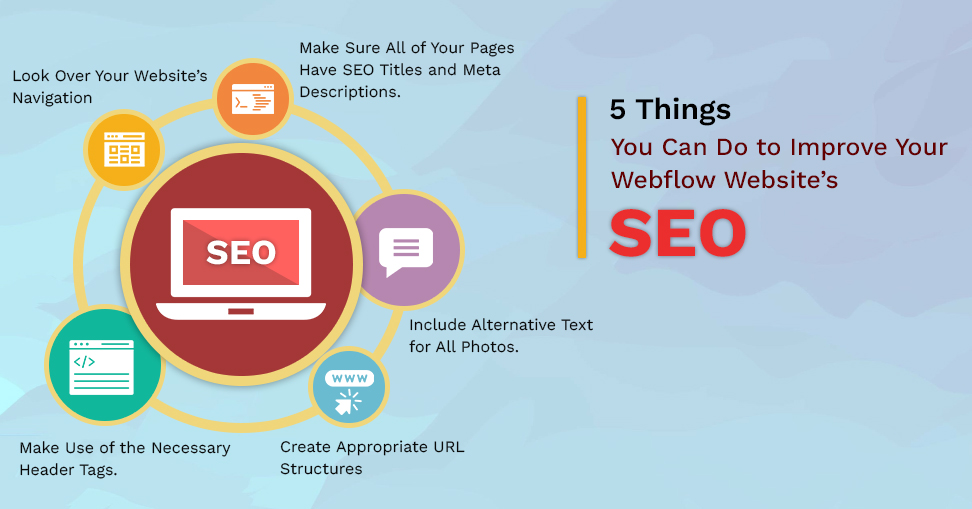Many website designers avoid eye contact when discussing search engine optimisation (SEO). However, this isn’t the case. The majority of contemporary SEO best practices are also well-known UX best practices.
So, don’t be concerned about SEO when designing a Webflow site. Consider usability. A great website layout, efficient navigation and easy-to-read content are essential for both human users and search algorithms.
Webflow already has a number of excellent SEO tools, so optimising for these criteria is simple.
5 SEO Optimisation Strategies for Your Webflow Website
Here are five pointers to help you get started with Webflow SEO:
1. Make Sure All of Your Pages Have SEO Titles and Meta Descriptions.
Search engine results (SERPs), social media and the web browser all display your meta title and meta description. Isn’t that a lot of exposure? The text preview of your page’s content is provided via meta titles and descriptions.
More clicks can be aided by compelling meta description language. In turn, a high click-through rate is a positive SEO indicator. The more people who visit your website, the more Google thinks it has value and the higher it will rank.

2. Include Alternative Text for All Photos.
Picture alt texts (tags) are similar to image meta descriptions. They describe the image’s content to a crawler that can’t see it.
Screen readers rely on alt tags to render picture content. Therefore, they’re also beneficial for online accessibility. If the image fails to load, text descriptions will appear.
But the best news is that Google has proved that properly optimised photos can help you rank higher in search results.
3. Create Appropriate URL Structures.
Both users and search bots use URLs to identify the content of a web page. Visitors will find it easier to navigate your site if the URLs contain words relevant to your site’s content and structure. A URL that is SEO-friendly is short and keyword-rich. It usually looks like the title of your page. However, to match it with your goal term, you may want to eliminate some filler words.
4. Make Use of the Necessary Header Tags.
Let’s alter your page content when you’ve finished page structure optimisation. Here, you should concentrate on creating appropriate header tags (H1 to H6).
Both readers and search engines need title tags to digest your page’s content and understand how different pieces of information relate to one another. They cover the main topic as well as its subtopics.

5. Look Over Your Website’s Navigation.
The cornerstone of providing a fantastic on-page experience for users is website navigation. A well-structured header and footer can also help with SEO.
When reading a book, you can look up information using the table of contents, page numbers or chapter titles. The web’s information architecture and website navigation both serve the same goal.
Keep Your SEO Focused on the Demands of Your Users.
For many individuals, SEO appears to be mystical woo-woo. Hopefully, this article has shown the exact opposite. The goal of an SEO company in India in 2022 is to provide readers with a positive on-site experience in terms of page performance, layout, navigation and content.
